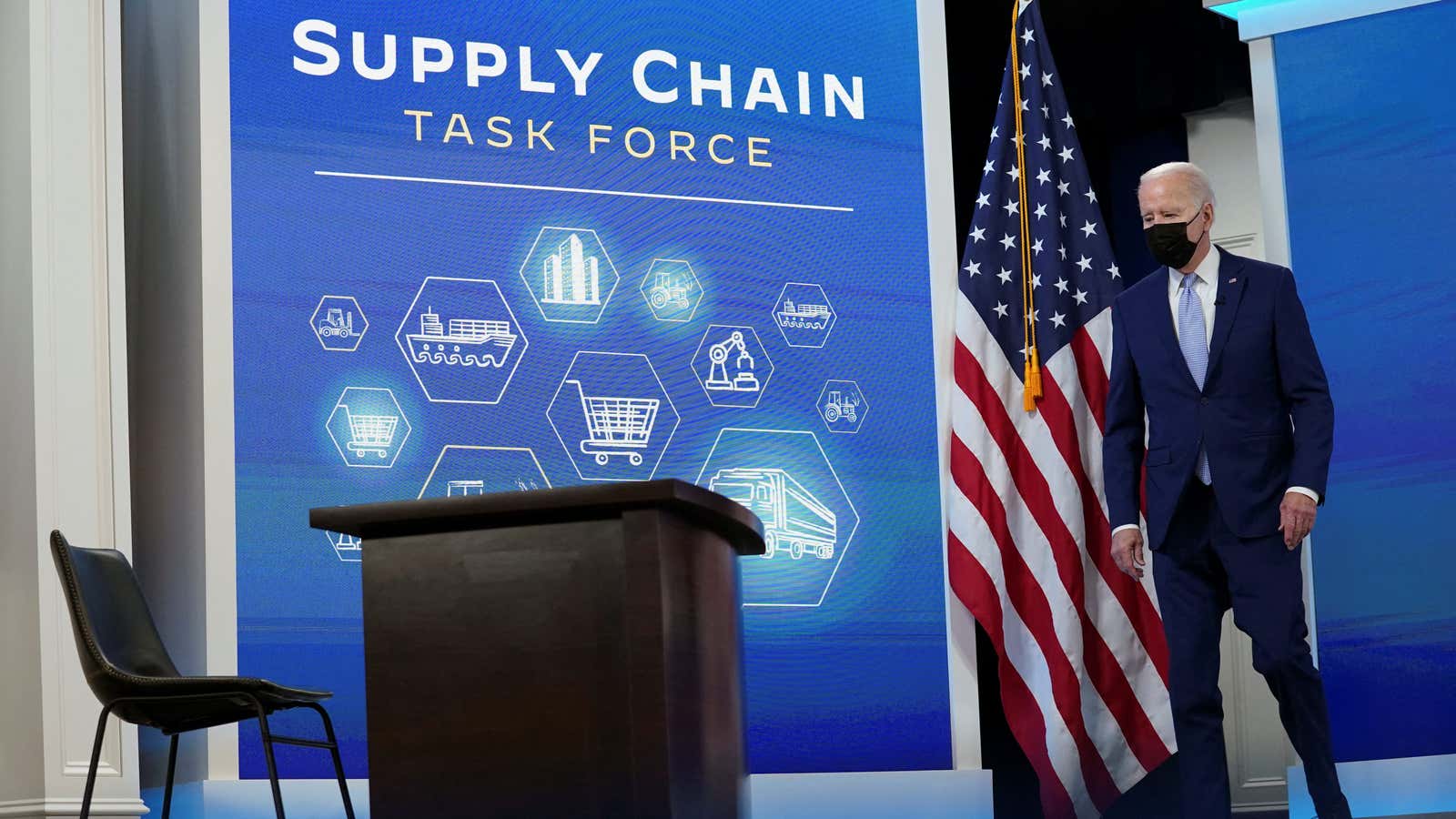The US government has made it a national priority to strengthen the resilience of its critical supply chains.
Washington’s efforts are driven in large part by a recognition that years of hollowing out its domestic industrial base have left the country overly reliant on foreign countries—including its chief strategic competitor, China—for inputs crucial to powering the global economy, such as critical minerals, batteries, and pharmaceuticals.
China has watched closely as the US (as well as Europe) have sought to shake up global supply chains to minimize reliance on China and reduce vulnerabilities.
But a commentary published Jan. 10 in Economics Daily, an official newspaper run by Beijing’s state council, appears to suggest (link in Chinese) that China need not worry too much about US moves to rejig global industrial chains.
“No large-scale transfer of the industrial chain”
The chief critique leveled at the US in the commentary is that Washington’s supply chain strategy has so far been cosmetic and reactive, focused on blocking Chinese access to technology and failing to fundamentally reshore American manufacturing and reshape global industrial chains.
“Up to now, what the Trump administration and the Biden administration have done is only to improve the domestic industrial chain and prevent rivals from gaining access to resources…there is no large-scale transfer of the industrial chain,” writes the author, Guan Jinyong.
🎧 For more intel on the global supply chain, listen to the Quartz Obsession podcast episode on rare earths. Or subscribe via: Apple Podcasts | Spotify | Google | Stitcher.
To be sure, complex global supply chains aren’t formed or reshaped overnight. For instance, it took Japan years to reduce its rare earth reliance on China from nearly 100% to under 60%.
But it’s also clear that the US faces steep challenges in its mission to scale up industrial capacity to manufacture things like lithium-ion batteries and rare earth permanent magnets. For one, even if the US is able to mine the materials domestically or secure supplies through overseas assets, it currently lacks the ability to process those materials at scale.
Lacking an overall national strategy
Another problem, argues the Economics Daily commentary, is America’s lack of a national strategy. “…Their way of thinking is not to first establish a detailed framework and then fill in the blanks one by one,” writes Guan. “So the so-called reconstruction of the industrial chain layout in the US will be a piecemeal model—spread out little by little, rather than at one stroke.”
It’s a critique that the US itself acknowledges. The department of energy, for example, reckons its broken lithium battery supply chain is hobbled by a lack of an overall national vision; to that end, the department last year released a “national blueprint” for the industry. Yet that is still only a national strategy from one department for one industry.
By contrast, the state’s heavy involvement in China’s economy means that every industry necessarily has a national strategy (whether the strategy bears fruit is another matter, of course). The “detailed framework” that the commentary refers is a nod to Beijing’s laser-sharp focus on “industrial layout,” with questions of how to structure key industries to maximize comparative advantages, economies of scale, and leverage over other countries being at the forefront of policymakers’ minds.
A similarly comprehensive approach for the US, liaising across different industries and coordinating upstream raw materials producers with downstream high-tech manufacturers, would require a more hands-on government approach—something that has long been anathema to America’s devotion to free markets. However, industrial policy may be staging a comeback in the US as the idea becomes less taboo among lawmakers and businesses.
